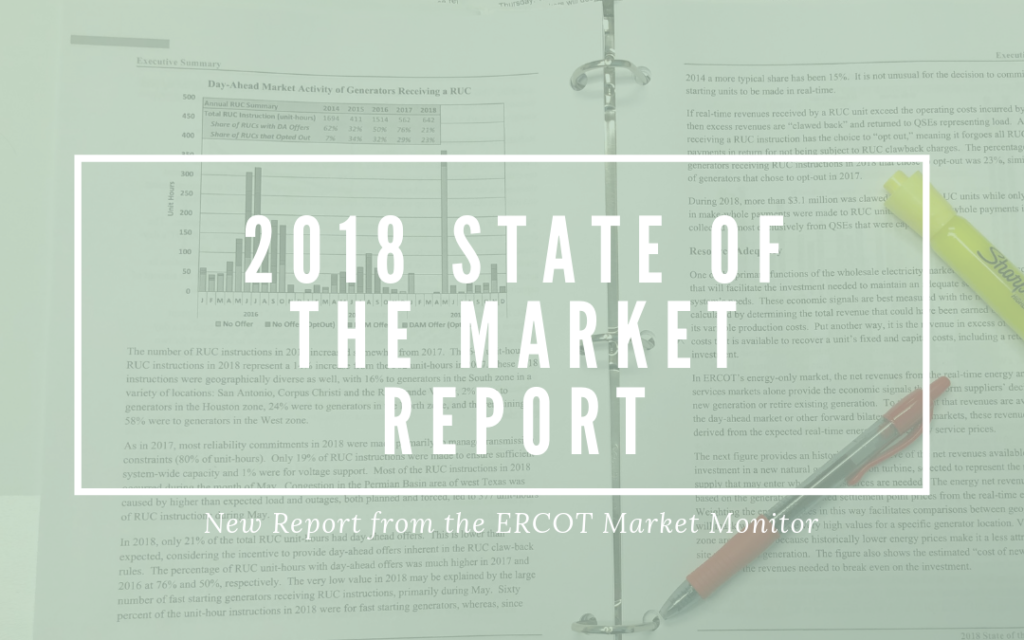Potomac Economics, a Virginia-based consulting firm, serves as the Independent Market Monitor for ERCOT.
Comparatively low generation reserves may become commonplace in Texas during future years, but that doesn’t mean the state’s electric grid will face big unmanageable risks for blackouts.
Those are two of the take-away findings included in a new report from ERCOT’s Independent Market Monitor, which was released this month online.
ERCOT, or the Electric Reliability Council of Texas, oversees the state’s main power grid and its stakeholder board sets rules for the wholesale power market. A Virginia-based consulting firm, Potomac Economics, serves as ERCOT’s Independent Market Monitor.
Each year the IMM releases a report assessing the market’s health. In its newest, the IMM projected that ERCOT’s reserve of installed generation capacity — that is, the amount of extra power output available on the ERCOT system beyond projected peak usage — will fall to a new and historic low during 2019.
However, the IMM also noted that low reserves may create fewer concerns going forward because the state’s power system overall has grown.
“Given the overall size of the system and projected growth, a more robust reserve margin may no longer be required to cover load forecast errors and mitigate generator availability risks,” the IMM’s report stated. It also noted that smaller distributed generation technologies have become more common within ERCOT, and that these new technologies should help decrease the risk of generator outages.
Since November 2010, ERCOT has targeted a planning reserve margin of 13.75 percent, a figure signifying in percentage terms an amount of installed generation capacity on the system beyond projected peak demand. In 2019, however, the reserve margin will drop to 7.4 percent, according to projections.
ERCOT’s Independent Market Monitor also reported that real-time wholesale energy prices reached historic peaks during 2018, including a price of $9,000 per megawatt hour recorded for about 10 minutes on Jan. 23, 2018. Real-time prices also exceeded $3,000 per MWh for about 45 minutes during 2018, according to the report. By way of comparison, wholesale power during non-peak hours typically sells for less than $50 per MWh.
Despite those peak prices, market conditions were rarely tight, according to the report.
Among other findings:
- Average real-time electricity prices increased by 26 percent in ERCOT during 2018, as compared to 2017 prices.
- A new demand record for peak usage was set on July 19, 2018, when Texans drew 73,473 megawatts of power from the grid. This was 3.3 percent higher than the previous peak set in 2016.
- The overall demand for electricity on the ERCOT grid increased 5.3 percent from 2017 to 2018.
- Congestion costs increased by 30 percent from 2017, for a 2018 total of $1.26 billion. Market participants incur congestion costs whenever a shortage of transmission capacity prevents ERCOT from dispatching the lowest-available-cost generator to meet demand.
- Wind output on the ERCOT system exceeded 19 gigawatts on Dec. 14, 2018. This represents a new record. On Dec. 27, wind provided 55 percent of the power on the system, also a new record.
- Overall, the ERCOT market performed competitively, according to the report.
You can read the report here.


